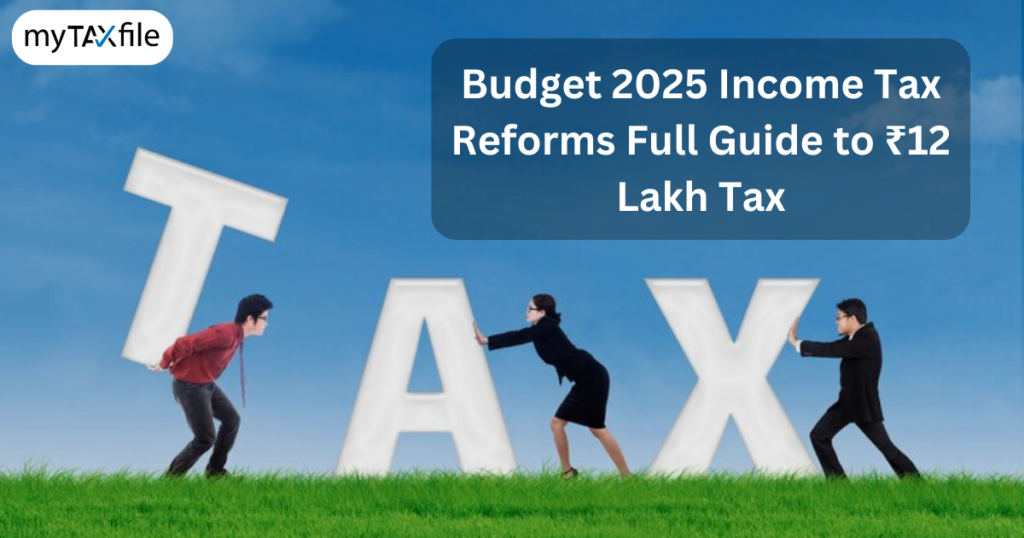The Union Budget 2025, presented on February 1, 2025, has introduced several significant changes to the income tax structure, particularly focusing on providing relief to middle-income earners. One of the most talked-about changes is the tax exemption for individuals with an annual income of up to ₹12 lakhs under the new tax regime. However, this exemption does not apply to special income tax rate incomes (such as capital gains, lottery winnings, etc.), and the standard deduction has been increased to ₹75,000. Additionally, the introduction of marginal relief for those whose income slightly exceeds ₹12 lakhs has added another layer of complexity.
This blog aims to demystify these changes, provide a detailed comparison of the new and old tax regimes, and offer practical examples to help you understand how these updates impact your finances. We will also address the confusion surrounding the ₹12 lakh exemption, marginal relief, and the applicability of these provisions to special income tax rate incomes.
Overview of Key Changes in Budget 2025
The Budget 2025 has introduced several reforms to simplify the tax system and reduce the tax burden on individuals. Here are the key highlights:
- Tax Exemption Limit Increased: Individuals with an annual income of up to ₹12 lakhs are exempt from paying income tax under the new tax regime.
- Marginal Relief Provision: Taxpayers whose income marginally exceeds ₹12 lakhs will benefit from marginal relief to ensure they do not face a disproportionate tax burden.
- Standard Deduction Increased: The standard deduction under the new tax regime has been increased from ₹50,000 to ₹75,000.
- Special Income Tax Rate Incomes: The ₹12 lakh exemption does not apply to incomes taxed at special rates (e.g., capital gains, lottery winnings).
- Simplified Tax Slabs: The new tax regime features fewer tax slabs and lower rates compared to the previous regime.
These changes aim to provide relief to middle-income earners, simplify the tax system, and encourage more taxpayers to adopt the new regime.
Tax Exemption Till ₹12 Lakhs: What Does It Mean?
Under the new tax regime, individuals with an annual income of up to ₹12 lakhs are not required to pay any income tax. This is a significant increase from the previous exemption limit of ₹5 lakhs under the old tax regime. The government has introduced this change to provide relief to middle-income earners and boost disposable income.
Key Points:
- Applicability: This exemption is available only under the New Tax Regime.
- No Deductions: To avail of this exemption, taxpayers must forgo most deductions and exemptions available under the old regime, such as HRA, LTA, and Section 80C deductions.
- Automatic Enrollment: The new tax regime is now the default option, but taxpayers can opt for the old regime if it is more beneficial for them.
Special Income Tax Rate Incomes: Exceptions to the Rule
The ₹12 lakh tax exemption does not apply to incomes taxed at special rates. These include:
- Capital Gains: Short-term and long-term capital gains from the sale of assets.
- Lottery Winnings: Income from lotteries, crossword puzzles, and other games.
- Horse Race Winnings: Income from betting and gambling.
- Other Specified Incomes: Any other income taxed at special rates under the Income Tax Act.
For example, if you earn ₹10 lakhs from salary and ₹3 lakhs from long-term capital gains, the ₹12 lakh exemption will only apply to the salary income. The capital gains will be taxed at the applicable special rate.
Increase in Standard Deduction to ₹75,000
The standard deduction under the new tax regime has been increased from ₹50,000 to ₹75,000. This deduction is available to all taxpayers, regardless of their income level, and reduces the taxable income by ₹75,000.
Key Points:
- Applicability: Available under both the new and old tax regimes.
- No Documentation Required: Unlike other deductions, the standard deduction does not require any supporting documents.
- Impact on Taxable Income: Reduces taxable income, thereby lowering the overall tax liability.
Marginal Relief Explained
Marginal relief is a provision that ensures taxpayers whose income slightly exceeds the ₹12 lakh threshold do not face a sudden jump in their tax liability. This relief is designed to eliminate the “tax cliff” effect, where a small increase in income results in a disproportionately higher tax burden.
How Marginal Relief Works:
- If your income exceeds ₹12 lakhs, you will still be eligible for partial tax relief.
- The relief ensures that the additional tax payable on income above ₹12 lakhs does not exceed the amount by which your income exceeds ₹12 lakhs.
Example:
Suppose your income is ₹12,10,000 (₹10,000 above the ₹12 lakh threshold). Without marginal relief, you would be taxed on the entire ₹12,10,000. However, with marginal relief, the additional tax on the ₹10,000 will be adjusted to ensure it does not exceed ₹10,000.
Here are the latest income tax slabs under the new tax regime as per the Finance Bill 2025 for FY 2025-26:
S. No. | Total Income (₹) | Tax Rate (%) |
1 | Up to ₹4,00,000 | Nil |
2 | ₹4,00,001 to ₹8,00,000 | 5% |
3 | ₹8,00,001 to ₹12,00,000 | 10% |
4 | ₹12,00,001 to ₹16,00,000 | 15% |
5 | ₹16,00,001 to ₹20,00,000 | 20% |
6 | ₹20,00,001 to ₹24,00,000 | 25% |
7 | Above ₹24,00,000 | 30% |
Examples to Illustrate Tax Calculations
Income Below ₹12 Lakhs
- Income: ₹11,50,000 (Salary)
- Standard Deduction: ₹75,000
- Taxable Income: ₹11,50,000 – ₹75,000 = ₹10,75,000
- Tax Liability: ₹0 (since taxable income is below ₹12 lakhs)
Income Slightly Above ₹12 Lakhs (With Marginal Relief)
- Income: ₹12,75,000 (Salary)
- Standard Deduction: ₹75,000
- Taxable Income: ₹12,10,000 – ₹75,000 = ₹11,35,000
- Tax Liability: ₹0 (since taxable income is below ₹12 lakhs)
Income Slightly Above ₹12 Lakhs (With Marginal Relief)
- Income: ₹12,10,000 (other than salary)
- Taxable Income: ₹12,10,000
- Tax Without Relief: ₹12,10,000 = ₹61,500
- Marginal Relief: ₹61,500 – ₹10,000 = ₹51,500 (since the tax cannot exceed the amount by which income exceeds ₹12 lakhs)
- Final Tax Liability: ₹10,000
Special Income Tax Rate Income
- Income: ₹10,00,000 (Salary) + ₹3,00,000 (Long-Term Capital Gains)
- Standard Deduction: ₹75,000 (applied to salary income)
- Taxable Income: ₹10,00,000 – ₹75,000 = ₹9,25,000 (Salary) + ₹3,00,000 (LTCG)
- Tax on Salary: ₹0 (since taxable income is below ₹12 lakhs)
- Tax on LTCG: ₹3,00,000 * 20% = ₹60,000 (assuming LTCG is taxed at 20%)
- Final Tax Liability: ₹60,000












